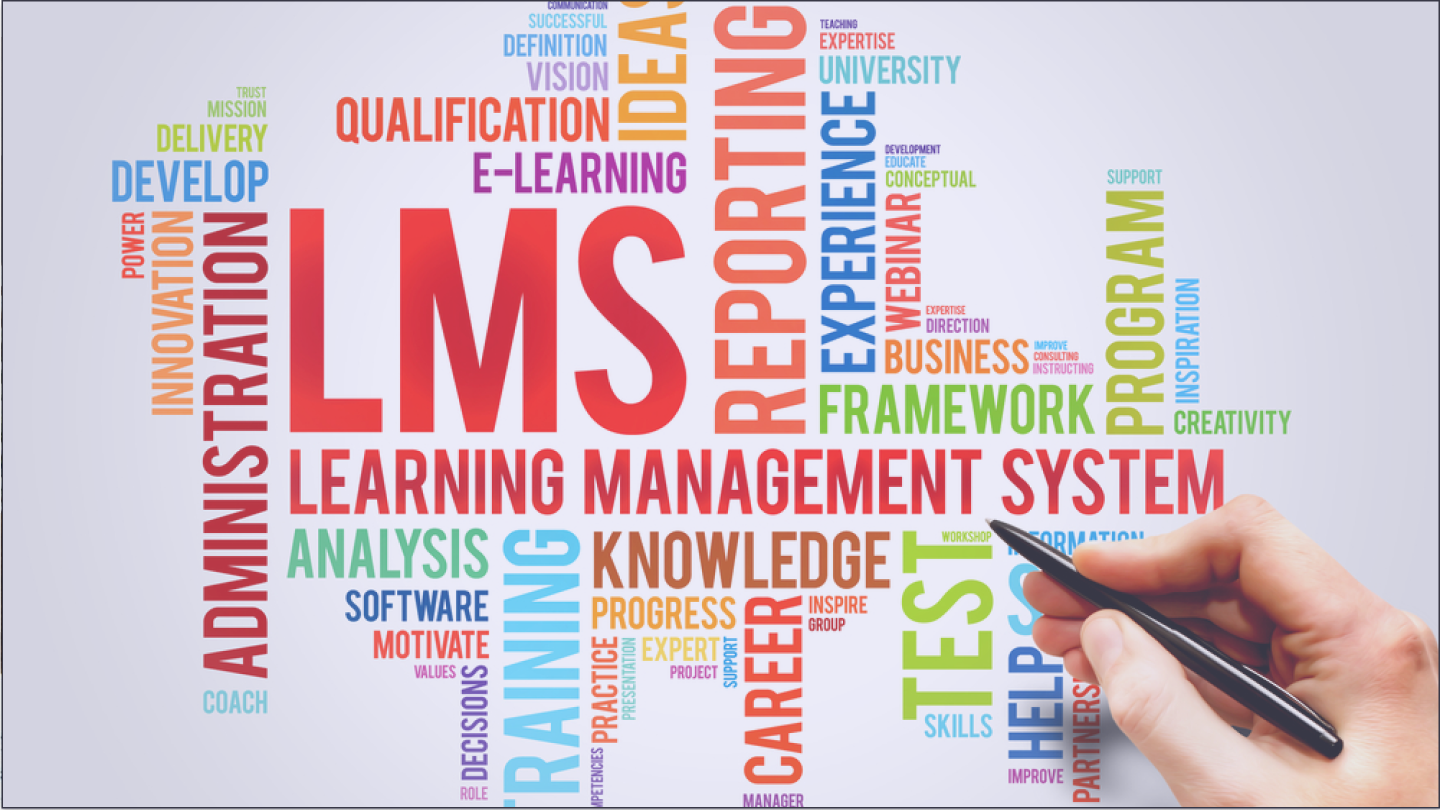- What is LMS?
- Types of learning management systems
- 2 Ways To Build Your Own LMS
- Benefits of Custom LMS Development
- Core Features of Learning Management System
- 7 Steps in Сreating LMS
- Average Cost of Сustom LMS Software Development
- How Long Does It Take to Create an LMS From Scratch?
- Our Experience
- Final Thoughts
- FAQ
There have been discussions about e-learning projects for a long time as online education has replaced many advanced online courses, training, and master classes. Distance learning has two important benefits. First, it is less expensive compared to traditional classrooms. Second, it is possible to acquaint people with new information in a short time, and the assimilation of the material is easy to check with the help of tests.
In this article we will share information about how to build your own LMS from scratch, what the average cost of creating a learning management system is, what the benefits of building a learning management system are, what the main steps in learning management system development should be, and much more.
In this article:
In This Article:
What is LMS?
Learning management system (LMS) is a repository of training materials that can be accessed via the Internet anywhere in the world. For its users, it is a convenient and quick way to gain new skills and knowledge. For its owner, it is a great way to reduce the cost to train employees, increase their professionalism, track and monitor their results, or earn money from training on the Internet.
The LMS platform can be compared to a school that fits in the pocket of both the student and the teacher. At school, as we all remember, learning is based on the transfer of theory, its consolidation, and then checking the assimilation through examinations and tests. LMS software allows you to do the same but in a modern and convenient way.
Students can access the learning materials wherever they want. They can study while driving to work while resting, eating, or just finding a free moment. After mastering the material, students are monitored — they do a test, answer questions in a detailed form, or somehow show their level of knowledge. Upon successful delivery of this work, the training is considered complete.
The course administrators get the opportunity to automate employee training and keep their finger on the pulse of students’ success. Instead of constantly providing the same material to different groups of students, they simply download the desired learning content once and then modify lessons, taking into account the latest data in the branch of studies. Students take credits and tests with minimal participation from the course administrator. The administrator can monitor each student’s statistics, receive feedback and change the learning system.

To better understand LMS platforms, you need to dive into the history
The idea of distance learning was first realized in the 18th century when an American scholar organized a correspondence course in stenography by publishing material in a newspaper. After another hundred years, this system improved when the opportunity for feedback appeared. Then the teacher sent the theory and assignments by mail to the student, and the student, having studied it, sent the completed assignment back.
The next step in the development of online learning management systems was the ability to record audio and video. Then there were courses on video and audio cassettes. But it was the progress in the field of information technology that led to the most powerful and decisive breakthrough.
After the invention of the computer, local networks began to appear — the forefather of the Internet — networks of several interconnected machines. They were originally used in universities to help teachers automate learning.
The groundbreaking step in the development of the distance learning system was the creation of the Internet. The global network made it easier for people to access information. In response to this, LMS platforms were invented, which made it possible to teach many people simultaneously, remotely, and independently of each other.
Types of Learning Management Systems
There are two main types of such systems: server and cloud. Let's understand how they differ.
1. Server-based LMS
The server LMS is installed on the owner's server and works with users through the Browser. This is the very first type of LMS that arose in universities and is still in demand among them. It is also chosen by the owners of large corporations, who care about complete control over the system and information security.
The disadvantages of server-based distance learning systems are the costs of acquiring a server, software, and administration.
2. Cloud-based LMS
Cloud solutions are the most common type of platform for distance learning. Because of their simplicity and ease of use, they are the choice of both private online school owners and business leaders to enhance corporate learning. With this approach, there is no need to purchase and administer a server, since all content is stored "in the cloud", and you simply pay for its rent.
There are both ready-made software products and systems on the LMS market that can be improved by adding new functions, based on the goals and specifics of training. Using ready-made solutions, you will have to adapt to their capabilities, take into account the existing limitations, and follow the standards. Therefore, most firms and educational institutions are increasingly choosing to implement an open-source system.
Start building LMS today
Take a look at how we're creating LMS and consider us as a partner!
2 Ways To Build Your Own LMS
Ready-made LMS system
This system works in the same manner as a construction set. This is the simplest and cheapest way to develop a learning management system. You don't even need to look for a specialist for this: if you have time, you can do it yourself.
We cannot say that a construction set is a bad option. It can be used when you need your online business page with basic functionality.
As a rule, most of the course builders have free versions or tariffs with a minimum cost, with which you can try the capabilities of the service and even create an LMS.
The platform is created using a ready-made template. You can select it from a catalog, and add the necessary blocks and elements, content, and design to your taste. As a rule, the platform provides users with its hosting and hosts the site on its subdomain development.
Basic versions have various restrictions on the number of pages, platform size, etc. For an additional fee, you can connect your domain, and additional services, export the source code, order promotion, and grow up to a certain point.
What are the disadvantages of this learning tool? Any construction set is a rather rigid framework that sooner or later gets cramped. One of the most important advantages of professional custom LMS creation is full access to the code and its modifications. Due to the limitations of the builder, the business will not have access to certain services, it will not be able to set up web analytics or SEO as efficiently as possible, and there may be complaints about the usability of pages, the version for mobile devices, etc.
Tips by experts
Check out our latest guide on EdTech. We've collected everything you need to know
Custom LMS system
Custom learning management system development involves writing a platform using frameworks without using boxed solutions.
When does it make sense to create a learning management system? Many people think that it is done just in pursuit of individuality, while in fact there are reasons for rationality behind this. If you have serious requests for the functionality of the LMS system, then it is often more expensive to implement and maintain them within a boxed solution than from scratch. In addition, this option is suitable for high-load projects with numerous integrations, since, in the case of limited CMS, it is necessary to put in too much effort so that everything could work flawlessly.
Complex LMS projects happen to be born at the level of the "box", but with the growth of needs such boxes are gradually added – and as a result, it is just a general philosophy that remains from the initial data, and the rest of the code becomes unique.
Both complex projects and simpler ones, but with atypical tasks, may need custom solutions. Custom LMS software development can take from several months to several years, taking into account LMS consulting and development of the project. While building an LMS for atypical projects, the budget depends on the amount of work and the cost of man-hours.
It’s impossible to tell offhand whether custom learning management system development is more rational for you or not. This requires a detailed term of reference and a detailed calculation.
Benefits of Custom LMS Development
When working with custom LMS platforms, the owner and user get a number of advantages that are not available when learning on the Internet without them.

Ease of access to courses
LMS platforms operate around the clock, so users can choose when they want to learn. There is no binding to the teacher's schedule, there is no rigid schedule of classes that you need to fit into. To access the course, only the Internet is needed, so the student can study anywhere in the world.
Unlimited space for study materials
Learning platforms own their servers where your materials are stored. You don't need to search for third-party services to publish your lessons.
Knowledge control & knowledge base
It takes a lot of time to certify a student without a distance learning system. The teacher has either to conduct automated tests that need to be created beforehand, or carry out face-to-face exams. LMS have built-in tools to control the assimilation of the learning process in a simple way and opportunity to have cloud-based knowledge base.
Calculation and analysis of statistics
It is almost impossible to keep statistics on student performance without a distance learning system. But LMS platforms give the course leader detailed statistics and their analysis, based on which they can track students’ progress and adjust the curriculum.
Possibility of quick feedback
Modern LMS platforms allow users not only to ask an expert a question but also to communicate with other students. Group chats and the possibility of personal consultation do not require switching to other applications.
Reduced training costs
For users of courses hosted on the LMS platform, such training is cheaper than face-to-face training: the time and money spent on travel are eliminated. For the owner of an online school, LMS platforms are also beneficial, because the salaries of teachers and other specialists are more expensive than paying even a very good training manager. On average, the transfer of corporate training to the LMS platform reduces the cost of it 5 times.
Easy to maintain
Good LMS platforms are intuitive, so everyone can figure out how to work on them and start their first course. Course creation, management, statistics, and other tools are in one window. You can do it yourself, train your employees to work with the platform or hire a professional.


Thank you for Subscription!
Core Features of Learning Management System
Before determining which features your LMS system needs, you need to clearly understand what tasks it should solve. During learning management system development, it is easy to implement the ability to integrate LMS with a variety of services. For example, a service for organizing webinars allows you to set up system integration with Zoom and other popular means of organizing online conferences. Integration with e-mail services and instant messengers is also configurable, it is possible to connect the telephone support function. At the request of the user, LMS integration with other third-party plugins and modules is configured.
The system should be easily scalable: the creation of full-fledged courses can be both for individual training, adjusting for each student, and the needs of large audiences. In the right LMS system, it takes very little time to create courses and effort thanks to a simple and intuitive administrator interface and a system of prompts.
Below we provide a list of the key LMS features:
- Course Management (Courses-> Modules-> Lessons);
- Test/survey management (interconnection with Courses / Modules / Lessons);
- Manage mini-landing pages for each online course;
- Control of course progress (you can include examinations, grading, and obtaining a certificate);
- Inserting videos from YouTube channels and Vimeo into lessons, with settings for the threshold for viewing the video files to view results achievement;
- User base, personal accounts, statistics collection;
- Forum Management (separate forums for Courses / Modules / Lessons, restricting access at the end of the course);
- Integration with payment systems;
- Integration with the mailing system.
- Gamification;
- Artificial intelligence (AI).

More on the topic
How To Create An E-Learning Platform
Read a more detailed list of must-have features in our article
Expand my expertise7 Steps in Creating LMS
There are just 7 steps to create your own LMS from scratch.
1. Planning and evaluation
The first question that interests the client is: "How much will it cost?" Next to it: "When will the mobile application be ready?" To answer both questions, the LMS development organization usually conducts an assessment and draws up a work LMS project plan. At this stage, the project manager typically joins the project. They can act from the side of the customer or the side of the development teams. Tasks of the project manager: coordinate the work of the team and communicate with the customer.
Express assessment takes from several hours to one day and gives a rough idea of the labor costs. A detailed license can be ready in a few days to a week, while it allows you to accurately determine how, when and which application you will receive as a result. If the business analyst connects to the project during the evaluation phase, it is easier for the client and developers to get a single view of the application, and calculate everything accurately.
2. Analytics
Analytics is not always part of the learning management system development process. It happens that clients independently carry out business analysis of a product, or come with a ready-made list of requirements. But those systems that have passed this stage from the developer company win — it is analytics that helps the business and developers achieve a common vision, and based on this, reassess the required work and get a detailed project budget.
3. Design
If the customer does not have a design, the development company creates a User Interface / User Experience from scratch. When the analyst hands over to the designer the basis of the graphical interface, and wireframes, the team proceeds to visual LMS design — it draws a map of screens, graphic elements, and a detailed prototype, taking into account various use cases.
At this stage, the UI / UX designer creates static responsive prototypes and, at the client's request, interactive prototypes of the application. So you can see how the application will look and what behavior to expect from it, taking into account the planned features. It all depends on the specific tasks and wishes of the client.
During the drawing of the design, the application takes on its future appearance. It is very important to get feedback from the business analyst and the client so that the design fully meets the requirements of the application.
Need a piece of advice...
...in technologies and software development? You've got into the right place!
4. Development
When there is a detailed technical specification and assessment, the design is ready and the prototype of the mobile application is approved, hardcore begins. LMS development process begins with writing code to implement the intended behavior of the application and wires the application logic to the back-end if provided. Also, engineers embody the finished design in the code — they prescribe all the styles and UI elements with which the user of the application interacts.
It is significant during learning management system development, when the design was laid out, to involve the designer. The designer will check how well the developers have implemented the screenshots of the application: whether all the styles correspond to the selected ones, whether the selected color is selected, what is the aspect ratio, how the corners are rounded, etc.
5. Testing and bug fixing
QA engineers connect to the LMS project from the very beginning, maintaining clear communication with developers and testing as often as possible. This guarantees a high level of quality and helps the client not to inflate the budget.
In parallel with the development, the QA team writes test documentation, for example, test cases. When part of the functionality is ready, testing begins. All bugs are entered into the bug reporting system, and after fixing it is verified that the bugs were fixed and this did not affect the rest of the functionality. Before the release of the LMS website, the platform is additionally tested to make sure that the application behavior meets the test documentation and client's requirements.
6. Release
When the series of tests and application modifications are completed, and the developers, analysts, testers, and designers all agree on the result, it's time to release the project to production.
7. Support and development
After the publication of the virtual classroom system, its story does not end. If the client finds bugs after the release, the development team will fix them. If the first months of the application's life show where and what needs to be finished or redone, there are two options: to conclude a maintenance contract or start a new development phase taking into account new variables.
Average Cost of Сustom LMS Software Development
On average in Europe (including the CIS countries), the cost of creating an LMS is $ 80–$ 100 per hour of work of an experienced specialist (cool developers charge from $ 150–$ 200 and this is considered an acceptable LMS pricing, for example, in the UK). Australia operates in the same range. On average, for all work with European developers (including in Ukraine), it is $ 15,000–$ 25,000.
The most expensive developers in the United States minimum get $ 50 per hour to make a learning management system, and the maximum reaches $ 250–$ 300. For comparison, let's take the Indians, who have a maximum price per hour of development — $ 80. Where does this price spike come from? It's all about the expertise in making a learning management system, which is confirmed not only by the number of works, and reputation (articles, speeches at conferences) but also by knowledge of English.

We have some numbers here
How To Choose A Software Outsourcing Country
You can read more about pricing models in the most popular outsourcing areas in the article
Learn moreRelease Management Process Flow
Creating an LMS from scratch can vary significantly in terms of time, depending on several factors, including the complexity of the project, the size, and expertise of the team, and whether you're developing it in-house or outsourcing it to a third-party development team. Here's an overview of the LMS development time and considerations for both scenarios.
LMS Complexity | In-House Team | Outsourcing Team |
Basic LMS | ||
User Authentication | 2-4 weeks | 2 week |
Course Upload/Management | 4-6 weeks | 3-5 weeks |
User Enrollment | 2-3 weeks | 2 week |
Progress Tracking | 3-4 weeks | 2-3 weeks |
Basic Reporting | 3 weeks | 2 weeks |
User Interface (UI) | 2-4 weeks | 2-3 weeks |
Total | 4-6 months | 3-5 months |
Advanced LMS | ||
All Basic LMS Features | 16-24 weeks | 12-20 weeks |
Content Authoring | 4-6 weeks | 2-4 weeks |
Advanced Reporting | 4-6 weeks | 2-4 weeks |
Social Learning Features | 3-5 weeks | 2-3 weeks |
Integration with Third-party Tools | 4-6 weeks | 2-4 weeks |
Gamification | 3-5 weeks | 2-3 weeks |
Total | 8-13 months | 5-10 months |
Fully Customized LMS | ||
All Basic and Advanced LMS Features | 32-52 weeks | 20-40 weeks |
Custom Workflows | 6-12 weeks | 4-8 weeks |
Personalized Dashboards | 6-12 weeks | 4-8 weeks |
E-commerce Integration | 4-8 weeks | 3-6 weeks |
Mobile App Development | 8-16 weeks | 6-12 weeks |
Total | 14-25 months | 10-19 months |
Our Experience
Let us guide you through our process of LMS development service.
Firstly, the Geniusee team creates the architecture of your own LMS system based on the terms of reference. The architecture lists the components of the system and their interconnections: test designer, course designer, reporting system, analytics, personal account, etc. The next step is to prepare a model of file structures for the developed architecture.
Then we think of an interface that should be convenient and adequately reflect the architecture. We design user behavior models, that is, we set roles. The main ones are students, teachers, and administrators, but if necessary, you can provide for others or rank the main ones, for example, by giving teachers different levels of rights.
Further, the main functionality of the system is created, which is subsequently tested and supplemented until the release version of the system is ready. If necessary, we also create a mobile application for iOS or Android with access to the main functions of the LMS. The development of the learning management systems is carried out by Geniusee on the basis of an agreement that includes all the important conditions: cost, terms, and system functionality.
Final Thoughts

LMS platforms bundle common online learning paths into a system that an administrator can manage easily. With their use, training requires fewer resources, goes to a new level of quality, and gets the opportunity to improve.
LMS systems are not services for a special circle of specialists, but tools for streamlining information transfer processes. It fits wherever someone needs to be trained and opens up new perspectives for its users.
FAQ
What does LMS mean?
The LMS platform is a repository of educational materials that can be accessed via the Internet anywhere in the world. For its users, it is a convenient and quick way to gain new skills and knowledge. For its owner, it is a great way to reduce the cost of training employees, increase their professionalism, track and monitor their results, or earn money from training on the Internet.
What are popular examples of LMS?
The top 8 best LMS vendors of 2023 are EdApp, Looop, EducateMe, GnosisConnect, Skillsoft, Kitaboo Insight, and TalentCards. We’ve also analyzed and complied the list of top 10 enterprise LMS.
Why use an LMS?
- Adapt newcomers and fast employee onboarding. Has a new employee joined the company? You can assign him an introductory course about the company and the upcoming work
- Regular professional development of employees. Do you want to make your employees experts? Train them regularly and improve their knowledge
- Carrying out attestation and certification. Need to assess the level of knowledge of employees? Run remote testing
- Training of specialists and partners in remote branches. Need to spread knowledge outside the office? Organize employees into groups on the LMS and assign them the appropriate courses
- Preparing training center clients. Do you create information products and sell them to your customers? Place courses and provide access to those customers who have already paid.
Why Use a Learning Management System?
- Adapt newcomers and fast employee onboarding. Has a new employee joined the company? You can assign him an introductory course about the company and the upcoming work
- Regular professional development of employees. Do you want to make your employees experts? Train them regularly and improve their knowledge
- Carrying out attestation and certification. Need to assess the level of knowledge of employees? Run remote testing
- Training of specialists and partners in remote branches. Need to spread knowledge outside the office? Organize employees into groups on the LMS and assign them the appropriate courses
- Preparing training center clients. Do you create information products and sell them to your customers? Place courses and provide access to those customers who have already paid.


















